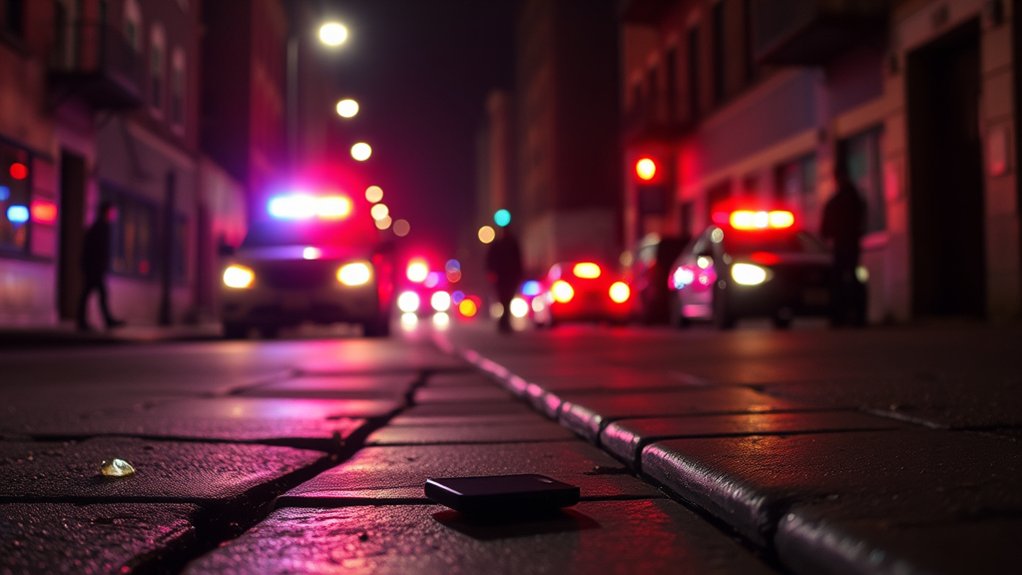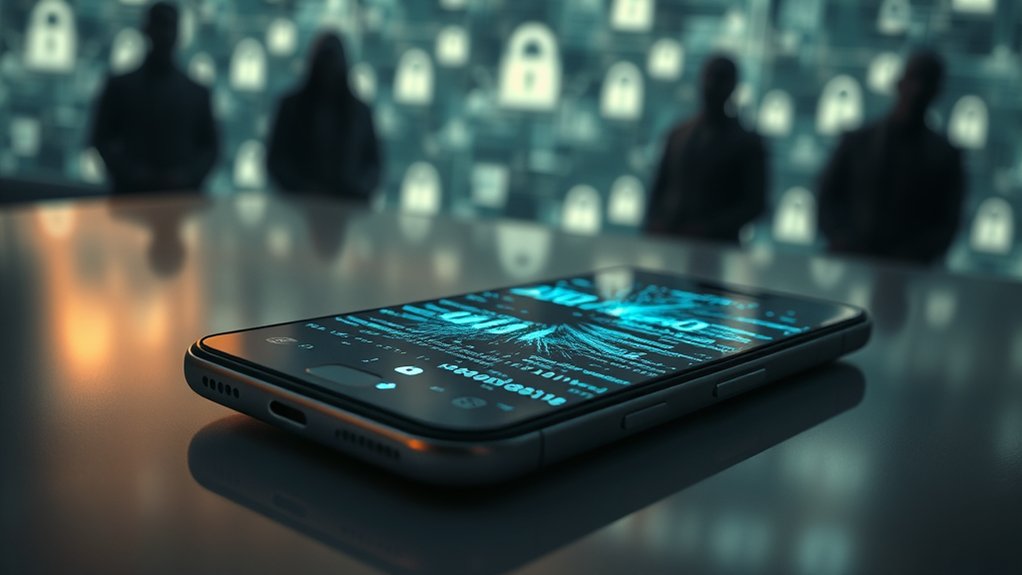Swatting pranks pose serious risks, including physical harm and psychological trauma for victims. Law enforcement responses to these false emergencies can result in injury or death, diverting critical resources from genuine emergencies. Each incident incurs substantial financial costs, straining public safety budgets. Victims report heightened anxiety and distrust in the justice system because of long-term psychological effects. As swatting incidents continue to rise, understanding the implications becomes vital for community safety and well-being. More information follows.

What constitutes the dangers of swatting pranks, a criminal trend that has garnered increasing attention in recent years? Swatting presents significant risks, leading to both physical harm and psychological trauma for innocent victims. Reports indicate that individuals unrelated to the incident have suffered injury or even death because of law enforcement responses to fabricated emergencies. In a notable case, a responding officer mistakenly shot an innocent person, highlighting the unintended dangers inherent in swatting. Additionally, swatting incidents divert essential law enforcement resources, often hindering responses to real emergencies. Such misallocation of emergency response teams may place communities at increased risk. The financial implications are considerable; each swatting call incurs significant costs to public resources, straining budgets and diverting funds that could be allocated to genuine public safety initiatives. The enduring psychological impact on swatting victims cannot be understated. Affected individuals frequently report experiencing heightened anxiety and stress, with some even suffering from severe health complications such as heart attacks induced by the shock of encountering SWAT teams unexpectedly. Swatting poses a threat to the physical safety of individuals targeted due to false emergency reports. The aftermath of these incidents often results in long-term trauma and a lasting distrust in the justice system, stemming from feelings of victimization and perceived inadequacies in handling these crises. Swatting is not merely a prank; it is a deliberate form of harassment rooted in personal vendettas or ideologically motivated attacks. Although high-profile individuals, such as public figures and gamers, are frequent targets, swatting can indiscriminately impact everyday citizens as well. The anonymity provided by digital platforms, combined with the proliferation of voice cloning and spoofing technologies, complicates the identification of perpetrators. Attackers gather public information about potential victims, making it easier for them to execute targeted swatting attacks. In response, law enforcement agencies, including the FBI, have begun to take swatting seriously, implementing specific legal measures against this increasingly prevalent crime. Nevertheless, the challenge of tracking these incidents remains significant, distinguishing swatting as a substantial threat to public safety and welfare.
Frequently Asked Questions
What Actions Can I Take to Prevent Being a Target of Swatting?
To prevent becoming a target of swatting, individuals should limit their personal information exposure online.
Utilizing privacy settings on social media, for example, protects sensitive data. In addition, employing strong passwords and multi-factor authentication secures online accounts.
Communities benefit from educating staff about swatting risks and monitoring social media for suspicious activity. Collaborative efforts with local law enforcement can improve vigilance, as reporting threats may prevent potential incidents from escalating.
Are There Legal Consequences for Swatting Pranks?
Swatting pranks carry significant legal consequences, classified as federal felonies in the United States. Offenders may face up to five years in prison for false reports, escalating to 20 years if bodily injury occurs.
Specific states, like New Jersey, impose penalties of five to ten years for causing emergency responses with false reports.
Furthermore, fatalities resulting from swatting can lead to murder charges.
Experts highlight that these severe penalties reflect the serious risks associated with such actions.
How Can I Report a Swatting Incident?
To report a swatting incident, individuals should quickly contact local law enforcement, ideally by calling 911.
It is vital to provide thorough information, such as the victim’s phone number and details about the incident. Experts recommend keeping the caller engaged to gather evidence as assistance is sought.
Documentation, including the time, date, and caller’s demeanor, aids investigators. Immediate reporting guarantees a coordinated response, enhancing safety during potential emergency situations.
What Should I Do if the Police Arrive Unexpectedly?
When police arrive unexpectedly, individuals should remain calm and follow instructions provided by officers. Keeping hands visible and avoiding sudden movements can prevent misunderstandings.
Reports indicate that adhering to these protocols improves safety for all involved. Additionally, individuals should provide accurate location details and any relevant information about potential threats.
Experts highlight that cooperation with law enforcement is crucial in mitigating risk and ensuring the effective handling of the situation.
Can Swatting Affect My Insurance Coverage?
Swatting can markedly impact insurance coverage for businesses. Increased premiums may arise as a result of the heightened financial risks associated with such incidents.
Complicated claims can challenge insurers, particularly concerning potential legal ramifications. For effective risk mitigation, extensive cyber insurance is crucial.
A study from the Insurance Information Institute indicated that businesses reporting swatting incidents faced an average 20% premium increase. Engaging in strong cybersecurity measures and employee training can help reduce these costs and complexities.









